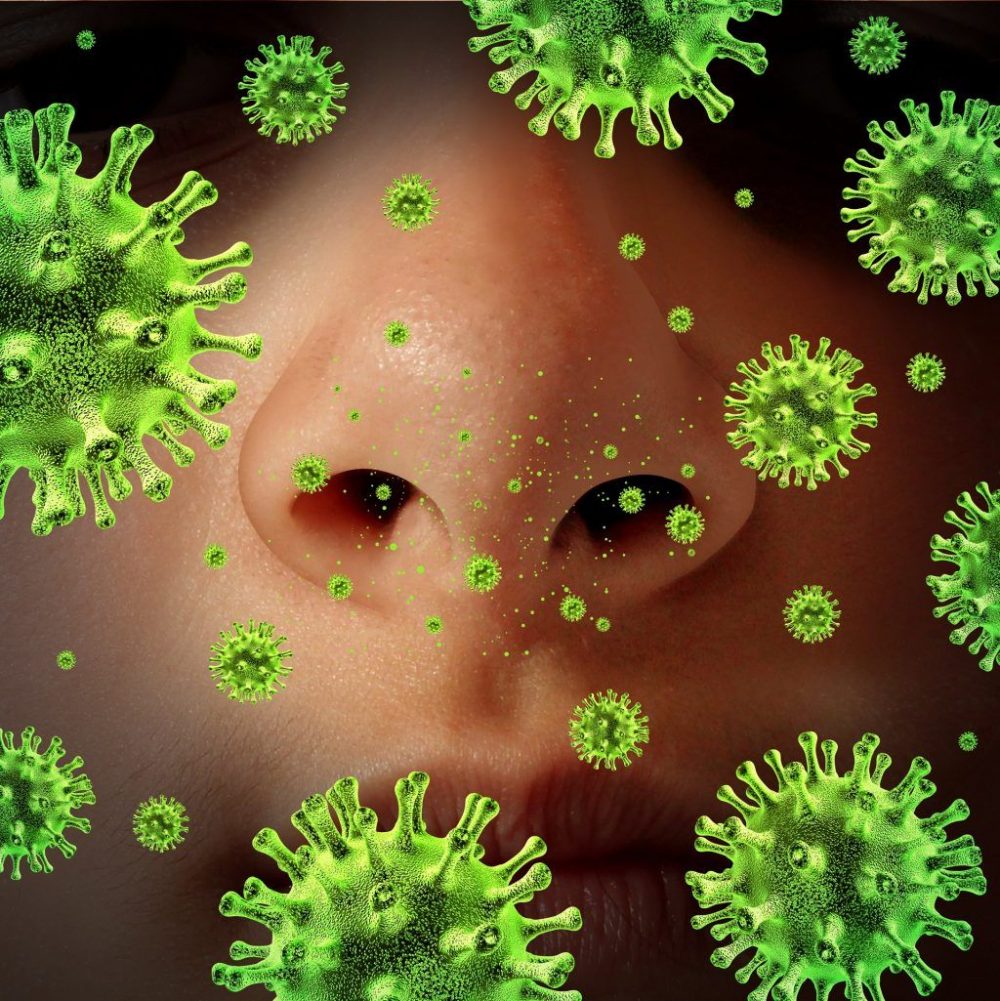

According to the Asthma and Allergy Foundation, some 60 million Americans have been diagnosed with indoor/outdoor allergies. Many more go undiagnosed yet also suffer with this malady that produces symptoms ranging from inconvenient (sneezing, runny nose) to life-threatening (asthma attack or anaphylaxis). While there is no known cure for allergies, many different treatments and medicines (prescriptive and OTC) exist for the management of the symptoms. In fact, over 12 billion dollars per year are spent on allergy treatments, including doctor visits and medications.
What all of these treatments have in common is, while they help manage the physical symptoms of allergies, they are costly and do not address the cause of the condition. Allergies occur when a foreign protein substance (allergen) is eaten, inhaled, injected or touched inciting an overreaction of the immune system. It seems then that the logical approach to dealing with allergies would be to avoid the allergen. That is not often possible as many allergens are encountered outdoors and relocating to a more favorable climate is probably not a viable option for most people. If you cannot avoid exposure to the allergen, then minimizing exposure and modulating your body’s response to allergens will be necessary.
Here are a four common sense actions to take that can help reduce the effect of allergies and improve quality of life.
- Allergen Avoidance – There is little that can be done to avoid outdoor allergens, especially in spring and summer when trees and flowers are blooming and pollens abound. Indoor allergens such as dust mites, animal dander, indoor molds and pollen can be year-round and require different strategies to deal with each:
- Dust mites are microscopic bugs that prefer to hide in carpeting, mattresses, house dust, stuffed animals and bedding. Hardwood floors instead of carpeting, allergen-proof mattress casings, frequent vacuuming with a HEPA filter, frequent washing of bedding and stuffed animals, and reducing the humidity in the home are all helpful in reducing the dust mite population in the home.
- Keep common sites for mold (shower curtains, bathroom tile, refrigerators and damp closets and basement) clean using a hot water and bleach solution. Keep air circulating in the summer with air conditioners or fans and/or a dehumidifier.
- If pollen is your allergy, closed windows and air conditioning are your best bet for keeping your indoor environment hypoallergenic.
- Pet dander poses a difficult problem, as the only clear solution is to remove the animal from the home. Barring that drastic action, confining the pet to the kitchen where fewer allergy pools exist and having the pet sleep in their own bed versus yours will help minimize your exposure.
- Eat Right – Foods that support a healthy immune system and inhibit inflammation are a must for dealing with allergies. This is achieved by eating primarily fresh, whole foods, cooked at home and avoiding processed foods. The following list highlights important nutrients for fighting allergies and some foods that contain them:
- Vitamin C – Reduces histamines which produce allergy symptoms. Found in: green peppers, citrus fruits, strawberries, broccoli, tomatoes and leafy greens.
- Vitamin D – Studies show that children with low Vitamin D levels are more likely to suffer from allergies. Vitamin D is a natural suppressor of the inflammatory cytokine reactions that can elevate the severity of allergies and asthma. Found in: cod liver oil, cold water fish (salmon, mackerel, tuna, sardines) and egg yolks. Adequate sun exposure in the summer months will also deliver a sufficient daily dosage of Vitamin D.
- Folic acid – Helps reduce the inflammatory response. Found in: cowpeas, spinach, asparagus, broccoli, green beans, avocados, peanuts, bananas, and oranges.
- Vitamin E – Reduces mast cell production which lowers histamines; therefore the inflammatory response of allergies is suppressed. Found in: dark green leafies, legumes, nuts, eggs, milk, oatmeal.
- Phytochemicals – Like quercetin and resveratrol, phytochemicals help suppress the inflammatory and stress responses that trigger allergies and asthma attacks. Found in: grapes, red wine, dark cherries/berries etc.
- Vitamin B5 – Pantothenic acid supports the adrenal glands which support healthy immune function. Found in: eggs, fish, chicken, cheese, milk, nuts, and potatoes.
- Essential Fatty Acids – These are probably the most important component of your diet for controlling inflammation. Found in: olive oil, flaxseed oil, nuts and nut oils, cold water fish.
- Use Supplemental Nutrition – These days it is difficult, if not impossible, to get all of the nutrients we need through a good, healthy diet alone. When we are fighting a chronic condition like allergies our conditional need for the nutrients that help fight allergies increases. To improve your body’s ability to cope with the effect of allergens in the environment, consider adding the following nutritional supplements to your daily regimen:
- Multi-vitamin – A well-designed multivitamin complex will deliver many of the important nutrients listed above.
- Antioxidant Complex – Antioxidants like carotenoids, flavonoids, anthocyanins and pterostilbenes protect the cells from the damage of inflammation. These nutrients are absolutely crucial for fighting disease, general well-being and healthy aging.
- Essential Fatty Acids – A high quality essential fatty acid complex provides the proper balance of omega oils that provide a powerful force against chronic systemic inflammation.
- Exercise – Regular, vigorous exercise is a very effective way to detoxify your system on a daily basis. If you suffer from asthma, make sure to get the advice of your physician and have your asthma symptoms under control before you undertake any exercise program.




